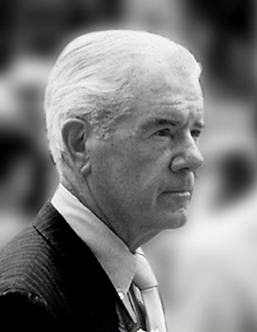
Hal O’Neill’s life reads like a Horatio Alger rags-to-riches story. It began in New York’s Hell’s Kitchen and ended in the affluent suburbs of New Jersey and, in the course of that journey, Hal played a pioneering role in the use of direct mail by the pharmaceutical industry.
O’Neill was born and raised in Manhattan’s West 40s. Since his family could not afford to send him to college, he opted for the next best thing, applying to Stuyvesant High School, one of the city’s elite schools for academically gifted students. He was accepted, but family circumstances required that he work and he took a part-time job which was to have long-term significance. He ran an addressograph machine nights and weekends for Fisher-Stevens, a direct mail company where his half-brother, Tom Clark, was general manager. When he graduated from Stuyvesant in 1927, it was a logical step to continue full-time with F-S.
Based on his past experience with the firm, he was assigned to getting out the mail—a crucial phase in direct mail marketing. He went to work with a will and soon had established a number of production records. Then, came a pivotal promotion to the sales department, a job ideally suited for O’Neill’s abilities and personality. With hard work and enthusiasm, laced with Irish charm and street smarts, O’Neill was soon one of the industry’s top salesmen.
As someone who knew the direct mail business from the ground up, O’Neill was well equipped to help the pharmaceutical industry when, after WWII, companies began to spend heavily on direct mail in their promotional programs to physicians. At that time, companies counted their sales representatives in the hundreds and had only a handful of medical journals in which to advertise. Moreover, the MD audience was largely general practitioners who treated a broad range of medical conditions. This made for a “target audience” of such size that it could not be adequately covered quickly or routinely by personal selling. The result: direct mail became a “mass” medium, essential to a product’s launch, providing announcement mailers, samples, and in-depth product monographs in advance of sales calls; then, as the campaign continued, reprints of clinical papers, promotional brochures, and reminder mailings often two to three a week for extended periods.
As direct mail experienced dramatic growth, O’Neill and Clark saw an opportunity for their own company to service the Rx industry’s needs. They formed Clark-O’Neill in 1952 and it became one of the leading firms in the field. Two of O’Neill’s sons, John and Roger, joined the firm after college and took over the day-to-day operations in the 1970s. The original addressing and mailing functions gave way to computerization. Clark-O’Neill was the first company to offer manufacturers data-based sales and marketing (call reporting) services and the company experienced a sixfold measure of growth by the mid-1980s.
Hal turned more and more of the business over to his sons, but continued with industry and social activities (for a number of years he was responsible for the PAC Christmas Party) and his informal job-matching service for Rx marketers.
O’Neill was the epitome of a leader of a promotional service company in medical advertising’s “Golden Age” of the 1950s-1960s. He was in command of the details and tactics of his medium, an insider on business developments and the movement of people within the industry, a superb host who enjoyed entertaining, and most importantly a genuine friend to innumerable company executives, product managers, agency chiefs, account executives, and media directors throughout the industry who were always pleased to spend time with him because of the warmth of his personality.
Hal passed away in 1984 at the age of 74.